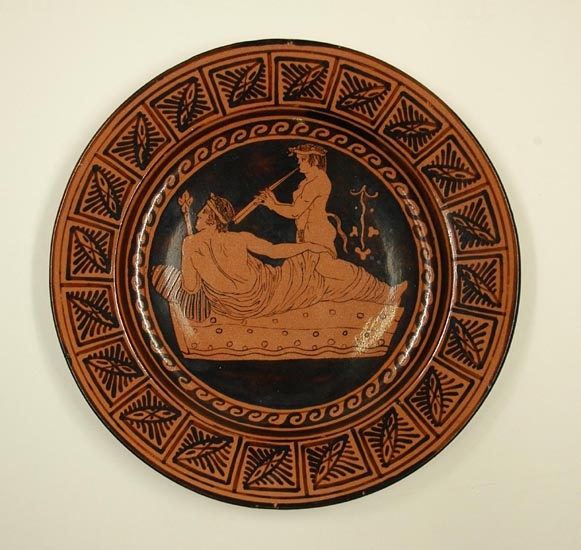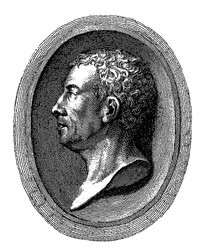Der antikisierende Teller zeigt die Rückenansicht eines mit dem Oberkörper nach links Gelagerten auf einer Kline, der Unterkörper ist in einen Mantel gehüllt. Er trägt eine Binde im Haar und hält einen Thyrsosstab. Vor ihm steht ein Aulos-spielender Satyr, rechts neben ihm ist ein Ornament, das an eine Weinranke erinnert.
Der Rand des Teller ist verziert mit einem Ornamentband aus schraffierten Vierecken und einem "Laufenden Hund".
Die rotfigurige Technik benutzte die Manufaktur Giustiniani in Neapel, als sie am Beginn des 19. Jahrhunderts ihre Keramikproduktion um die Serie "all’antica" erweiterte und sich auf das möglichst genaue Kopieren antiker Vorbilder spezialisierte.
Pressmarke der Manufaktur Giustiniani, Neapel um 1830
en

